Pharmacological Approaches to Kidney Stone Management
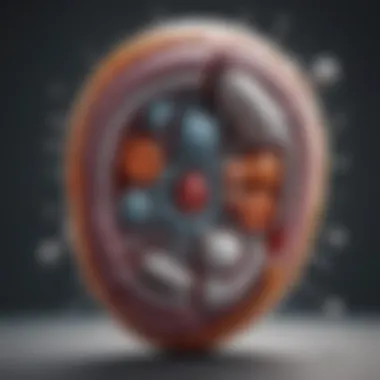
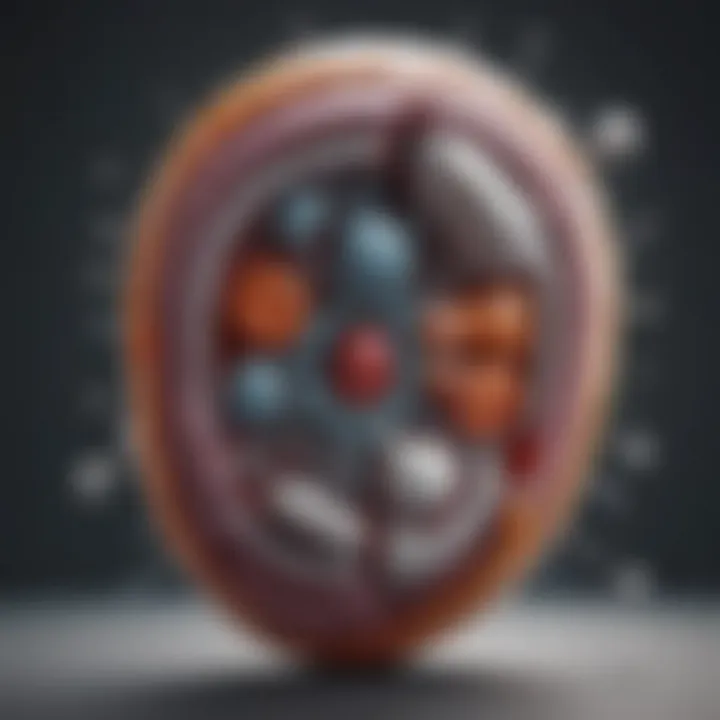
Intro
The management of kidney stones has evolved considerably over the years, with pharmacological approaches taking a central role in patient care. These approaches are not just about alleviating symptoms but also aim to prevent the formation of new stones. Understanding the various medications available, their mechanisms of action, and the implications for patient health is crucial for anyone involved in this field. This discussion serves to illuminate the wide array of pharmacological strategies that can be employed effectively in the treatment of kidney stones.
Background and Context
Overview of the Research Topic
Kidney stones, or nephrolithiasis, are hard deposits made of minerals and salts that form inside the kidneys. They can cause severe pain and lead to various complications, including urinary tract infections and kidney damage. The prevalence of kidney stones has been on the rise globally, necessitating effective management strategies. Medication plays a vital role, either in pain management or in reducing the likelihood of stones recurring.
Historical Significance
The history of kidney stone therapies illustrates how far we've come. Historically, treatments ranged from herbal remedies to surgical interventions. Over time, as our understanding of urolithiasis improved, we shifted towards a more drug-centered approach. The introduction of analgesics transformed the pain management aspect of treatment, while diuretics began to show promise in preventing stone formation. Each era in the treatment of kidney stones marks a significant leap in our medical knowledge, leading to more effective and targeted pharmacological strategies.
Key Findings and Discussion
Major Results of the Study
Research in recent years highlights several categories of medications that are pivotal in managing kidney stones. Commonly studied drug classes include:
- Analgesics: Essential for managing pain associated with renal colic.
- Diuretics: Help promote urine flow and dilute the urine, potentially preventing stone formation.
- Potassium citrate: Often used to increase urine pH, thus reducing the chances of forming uric acid and calcium stones.
The efficacy of these medications can vary significantly between individuals, often necessitating a personalized approach to treatment.
Detailed Analysis of Findings
Each medication's mechanism of action offers intriguing insights into their effects:
- Analgesics, such as ibuprofen or opioids, act by blocking pain signals in the nervous system, which can provide substantial relief from the acute pain of kidney stones.
- Diuretics enhance urine production, which can help clear smaller stones and prevent new ones from forming.
- Potassium citrate alters urine chemistry, making it less favorable for stone formation by increasing solubility of stone-forming substances.
In summary, pharmacotherapy presents a multi-faceted approach to kidney stone management, addressing both pain relief and prevention of recurrence.
Moreover, understanding the potential side effects of these medications is equally essential. For instance, prolonged use of diuretics can lead to electrolyte imbalances, which may complicate existing health issues.
Intro to Kidney Stones
Kidney stones are no small potatoes; they represent a significant health issue affecting millions worldwide. These hard deposits form in the kidneys, arising from minerals and salts that crystallize and clump together. Understanding kidney stones isn’t merely an academic exercise; it’s about grasping how to tackle a common condition that impacts quality of life. The importance of discussing this topic lies in the implications it has for prevention, treatment, and overall patient care.
The challenge of managing kidney stones often leads patients down a winding road of pain and discomfort, with pharmacological approaches serving as crucial tools in navigating this path. From relief of acute pain to strategies for preventing recurrence, the proper pharmacological management can significantly transform a patient's journey.
Understanding Kidney Stone Formation
Kidney stones originate from a complex interplay of factors within the urinary system. When the balance of fluids, salts, and minerals is disrupted, some components can crystallize and form stones. The factors influencing this process include urine composition, volume, and pH level.
For instance, excessive calcium or uric acid in the urine often leads to the most common types of stones. It’s essential to appreciate the various underlying mechanisms at play here. While certain genetic predispositions make some individuals more susceptible, lifestyle choices like diet can also tip the scales. When people consume diets high in salt and protein, it raises their chances of stone formation. Conversely, a diet rich in fruits, vegetables, and adequate hydration offers a protective effect.
Prevalence and Risk Factors
Kidney stones are not just the concern of a small minority; they affect about 10% of the global population at some point in their lives. However, certain demographics find themselves at higher risk. Males are statistically more likely to develop stones than females, and ages ranging from 30 to 50 years are particularly susceptible.
Several risk factors contribute to the likelihood of developing kidney stones:
- Family History: If someone in your family has had stones, your chances increase too.
- Dehydration: Lack of fluid intake can lead to concentrated urine, fostering stone formation.
- Obesity: Excess body weight contributes to alterations in urine chemistry that encourage stones to grow.
- Specific Medical Conditions: Diseases like diabetes, hypertension, and inflammatory bowel disease can raise risk levels.
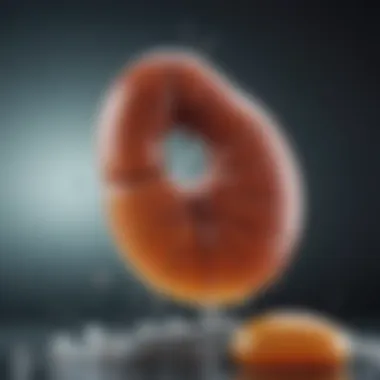
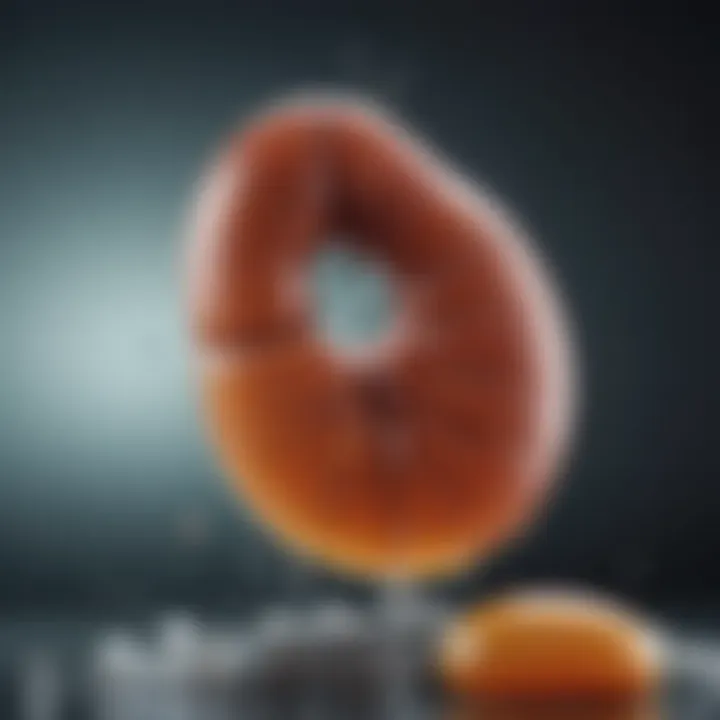
"Knowing the enemy is half the battle. Understanding kidney stone build-up is vital for effective prevention and treatment."
The interplay of these factors can complicate the management of kidney stones, making it imperative for healthcare professionals to consider individual patient profiles when devising treatment plans. These insights lay the groundwork for exploring pharmacological approaches that could provide relief for patients affected by kidney stones.
Pharmacological Treatment Options
Pharmacological treatment options play a crucial role in managing kidney stones, offering targeted solutions that can help alleviate symptoms and prevent future occurrences. The need for effective pharmacotherapy arises from the often painful nature of kidney stones, which can significantly impact a patient's quality of life. Medications serve not only to reduce immediate discomfort but also to address underlying conditions that contribute to stone formation. This section delves into various medication classes, their specific roles, and mechanisms of action, providing insight into how they collectively enhance the management of this prevalent condition.
Overview of Medication Classes
When discussing kidney stones, it is essential to explore the different classes of medications available. Each category serves distinct functions and targets varying aspects of stone formation and pain management. Some key medication classes include:
- Analgesics: These medications help control pain associated with passing kidney stones. They can range from over-the-counter pain relievers to potent prescription options.
- Diuretics: Often used to increase urine output, these help prevent certain types of stones by promoting the excretion of stone-forming substances.
- Potassium Citrate: This medication alkalinizes the urine, which can inhibit the formation of uric acid stones.
- Allopurinol: Commonly prescribed for patients prone to uric acid stones, it works by reducing uric acid production in the body.
The integration of these medications in treatment plans allows healthcare providers to tailor interventions to individual patient needs, thereby optimizing outcomes.
Role of Analgesics
Analgesics hold a vital position in the pharmacological management of kidney stones. The pain they address, commonly referred to as renal colic, can be excruciating and debilitating. Medications in this class function by inhibiting pain signals that the body sends to the brain, offering relief during acute episodes. Popular options include Nonsteroidal Anti-Inflammatory Drugs (NSAIDs) like ibuprofen or naproxen and stronger prescription painkillers like opioids.
Using these medications requires a careful balancing act. While they provide essential pain relief, their side effects must be considered. NSAIDs might cause gastrointestinal issues, while opioids can lead to dependence if used excessively. Therefore, patients undergoing treatment should be monitored closely, and adjustments made based on their responses to medications.
Diuretics and Their Mechanism
Diuretics form another critical component of pharmacological approaches to kidney stones. These medications work by increasing urine output, which helps to dilute the substances that can crystallize and form stones. Thiazide diuretics, in particular, have been shown to be effective in reducing calcium in urine, thus limiting the formation of calcium-based stones.
The mechanism behind how diuretics function is quite fascinating. By inhibiting sodium reabsorption in the kidneys, they encourage the excretion of water along with ions. This increased urine production not only flushes out existing crystals but also creates an environment less conducive to further stone development.
It’s worth noting that diuretics need to be administered judiciously. Fluid and electrolyte imbalances can arise from excessive use, making regular monitoring necessary to ensure patient safety. The overall objective with diuretics is to enhance hydration and mineral balance, which significantly reduces the likelihood of stone formation in predisposed individuals.
"Understanding the pharmacological options for kidney stone management empowers patients and clinicians alike to implement effective strategies that address both pain and preventative care."
In summary, the pharmacological treatment options available for kidney stones encompass a range of medications with distinct mechanisms and benefits. By carefully selecting and integrating these treatments based on individual patient profiles, healthcare providers can significantly improve the management of kidney stones, thus enhancing overall patient well-being.
Medications for Stone Prevention
The topic of medications for stone prevention holds significant relevance in the context of kidney stone management. Effective prevention strategies can steer patients away from the painful experiences associated with kidney stones and subsequently reduce healthcare costs. Medications can help to modify the urinary environment, decreasing the likelihood of stone formation. This section delves into specific pharmacological agents that play a pivotal role in preventing stones, emphasizing their mechanisms of action, benefits, and critical considerations.
Thiazide Diuretics
Thiazide diuretics are not merely for high blood pressure; they have a notable effect on kidney stone prevention. These medications help decrease calcium excretion in urine, which is particularly valuable because calcium stones are the most common type of kidney stone. By fostering the reabsorption of calcium in the kidneys, thiazides can lower the concentration of calcium in urine, effectively reducing the risk of stone formation.
- Examples: Hydrochlorothiazide and Chlorothiazide are two widely used thiazide diuretics.
- Dosage Considerations: It is crucial to find the right dosage, as excessive doses can lead to electrolyte imbalances. Regular monitoring of serum electrolytes will help in avoiding potential complications.
In essence, thiazide diuretics serve as a dual-action weapon against both hypertension and kidney stones.
Potassium Citrate
Potassium citrate brings a different mechanism to the table. This compound functions as an alkalinizing agent, which can reduce urinary acidity. Elevated acidity can lead to uric acid and cystine stones, so by neutralizing urinary pH, potassium citrate helps to dissolve these types of stones and minimizes the likelihood of their occurrence.
Moreover, potassium citrate also increases the concentration of citrate in urine, which is known to inhibit calcium stone formation. Patients often use potassium citrate for:
- Uric Acid Stones: It can effectively help in dissolving uric acid stones, especially in patients who present with hyperuricemia.
- Calcium Stones: By increasing urinary citrate, it can also reduce calcium stone risk.
In practice, it may come in a tablet or syrup form, and the choice often depends on patient preference and tolerability.
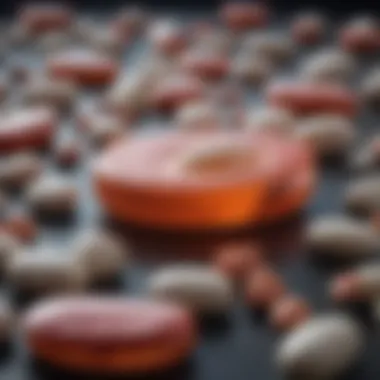

Allopurinol for Uric Acid Stones
Allopurinol is another essential player in the prevention of uric acid stones. By inhibiting the enzyme xanthine oxidase, it reduces the production of uric acid, making this medication particularly effective for those with elevated uric acid levels. Higher uric acid can crystallize in the urine, causing these painful stones.
- Key Benefits:
- Reduced Urate Levels: Helps in standardizing urate levels, hence decreasing the risk of stone formation.
- Additional Uses: Beyond stones, allopurinol is also helpful in managing gout and certain types of kidney disease.
Administration of allopurinol usually involves a patient-specific approach. Regular urinalysis is no joke here; monitoring uric acid levels is critical to adjusting the dosage effectively.
"Using pharmacological interventions to prevent kidney stones is like preventive maintenance on a car; it keeps you from being stranded on the road of life with pain and complication."
Efficacy of Pharmacological Interventions
The efficacy of pharmacological interventions plays a crucial role in managing kidney stones. These medications not only alleviate symptoms but also address the underlying causes of stone formation, aiming for both immediate relief and long-term health benefits. Understanding how these drugs work, their effectiveness in various clinical scenarios, and their potential drawbacks leads to better patient outcomes. Moreover, it allows healthcare professionals to tailor treatment based on individual patient profiles, which is essential for effective management.
Clinical Evidence and Studies
Clinical studies have explored a range of pharmacological options to ascertain their effectiveness in managing kidney stones. For instance, research has indicated that thiazide diuretics significantly reduce the recurrence of calcium stones. In one study, patients who entered treatment with these agents noted a drop in stone formation by nearly 50% after a year of consistent use. Such substantial findings underline the importance of selecting the correct pharmaceutical intervention.
Analysis of controlled trials shows that potassium citrate prevents stone formation due to its ability to alkali urine, which discourages the crystallization of calcium salts. In a randomized trial, it demonstrated improved urine alkalinity and decreased levels of calcium oxalate, a common contributor to stones. These findings serve as robust evidence supporting the use of potassium citrate as a preventive strategy.
Other medications have also garnered attention. A meta-analysis on allopurinol indicated that it can considerably lower uric acid levels in patients prone to uric acid stones. This research highlights pharmacotherapy not merely as a means to cope with immediate pain but also as an active strategy to combat the formation of stones. Collectively, these studies contribute to a growing body of evidence demonstrating the effectiveness of pharmacological interventions in renal stone management.
Long-term Outcomes
The long-term outcomes of pharmacological treatment in kidney stone management extend beyond symptom relief. Regular follow-ups indicated that patients who maintained a regimen of medications such as thiazide diuretics, potassium citrate, or allopurinol experienced fewer stone events over multiple years compared to those who did not.
"The key to preventing kidney stones often lies in consistent medication use and lifestyle adjustments."
Moreover, long-term users of potassium citrate reported improvements in quality of life through reduced stone-associated pain episodes and fewer emergencies. The challenges of course with adherence and potential side effects can pose barriers to treatment success. For example, some patients may experience gastrointestinal discomfort or other adverse reactions, necessitating careful monitoring and occasionally, alternative therapies.
In summary, the efficacy of pharmacological interventions against kidney stones holds promise for achieving positive long-term outcomes. However, it is imperative to consider each patient's unique situation and foster adherence through education about the importance of treatment regimens. This holistic approach ensures that the benefits of pharmacological interventions are maximized, steering patients towards healthier futures.
Combination Therapy in Kidney Stones
The management of kidney stones is a complex territory that often requires more than a one-size-fits-all approach. That's where combination therapy comes into play, merging pharmacological interventions with dietary adjustments to yield better overall patient outcomes. This practice acknowledges that the various mechanisms leading to stone formation vary significantly among individuals. Hence, addressing this multifaceted issue through an integrative lens can maximize treatment efficacy.
Integrating Medications with Dietary Changes
In the realm of combination therapy, integration of medications with dietary changes can be particularly beneficial. Medications like thiazide diuretics may help in reducing calcium excretion, but pairing this with a calcium-restricted diet could amplify the drug's effectiveness. Essentially, a tailored dietary approach allows for a dual-layer of prevention against further stone formation.
- Key dietary considerations include:
- Reducing sodium intake: High sodium levels can increase calcium stone formation.
- Limiting animal protein: Excessive protein may lead to higher uric acid levels, promoting uric acid stones.
- Increasing fruits and vegetables: These foods help maintain proper urine pH and decrease crystallization risk.
Furthermore, there's evidence suggesting that patients adhering to these dietary modifications report fewer recurrent cases of kidney stones. By coupling medications with thoughtful nutrition, healthcare professionals can foster an environment less conducive to stone development.
The Role of Hydration
Hydration is another cornerstone of effective combination therapy. Increasing fluid intake dilutes the substances in urine that lead to stone formation, essentially washing them out before they can crystallize. While medications might target specific pathways of stone formation, adequate hydration creates a broad shield against them.
- Hydration strategies include:


- Aim for at least 2.5 to 3 liters of water daily, particularly for those with a history of stones.
- Use reminders or hydration apps to keep water intake top-of-mind.
- Incorporate hydrating foods, such as cucumbers and watermelons, into daily diets.
"Proper hydration works as a lifeline; it helps flush out toxins while aiding the medications in their battle against kidney stones."
In essence, combination therapy utilizing medication and hydration ultimately enlightens the pathway to more effective kidney stone management. By recognizing and addressing the multi-layered aspects of this condition—medical, dietary, and lifestyle changes—clinicians can significantly improve patient quality of life and prevent future stone occurrences.
Side Effects and Considerations
In the realm of kidney stone management, understanding the side effects and considerations associated with pharmacological treatments is paramount. Medication is not a magic bullet; it comes with its own set of challenges that can affect patient adherence and overall health outcomes. Recognizing these factors not only arms healthcare providers with the knowledge necessary to guide decisions but also empowers patients to engage actively in their treatment plans. Being informed about side effects helps in tailoring therapies and managing expectations, ultimately leading to better patient satisfaction and outcomes.
Potential Adverse Reactions
When one delves into the pharmacological landscape of kidney stone treatment, it's essential to be aware of potential adverse reactions that medications may evoke. Some of these reactions might be common yet often overlooked—such as gastrointestinal disturbances, which can turn a simple course of therapy into a miserable ordeal for patients. For instance, potassium citrate, commonly used to manage certain types of stones, can lead to nausea and diarrhea. Conversely, thiazide diuretics may cause electrolyte imbalances, leading to conditions such as hypokalemia.
"Knowing what to expect empowers patients to tackle side effects head-on, rather than being blindsided by them."
Other serious but rarer side effects can include renal impairment or hypersensitivity reactions, which might introduce complications into an otherwise straightforward kidney stone management plan. It’s vital for patients to report any unusual symptoms so that clinicians can make necessary adjustments to their regimen.
Monitoring Patients on Long-term Therapy
Long-term therapy often comes with the territory of preventing kidney stones, yet this necessitates a rigorous approach to monitoring. Continuous assessment not only ensures that the prescribed medications are achieving their intended effects, but also helps safeguard against those pesky side effects that may arise over time.
Regular blood tests may be warranted to keep an eye on kidney function and electrolytes, especially for patients on diuretics or other medications that impact renal health. Additionally, tracking urinalysis results can yield insights into stone formation risks, allowing for proactive adjustments to be made in therapy.
Patients may find periodic check-ups to be a drag, but they possess a critical importance in maintaining a safe treatment environment. Education about the possible side effects and the importance of follow-up can enhance patient compliance and motivate them to report deviations in their health status.
Advancements in Treatment Approaches
The management of kidney stones has evolved considerably over the years, with pharmacological strategies continually undergoing refinement. The innovations in treatment approaches are essential not just for improving patient outcomes, but also for tailoring therapies to individual needs. Given the multi-faceted nature of kidney stone formation and recurrence, staying abreast of advancements in this area can aid healthcare providers in delivering precise and effective interventions.
New Drug Developments
In recent years, the landscape of pharmacotherapy for kidney stones has seen the introduction of several new drug candidates that promise enhanced efficacy and fewer side effects compared to traditional treatment options. For instance, researchers are now exploring compounds that inhibit the crystallization process in urine, thus preventing the formation of stones in the first place.
"Identifying and utilizing novel pharmacological agents can shift the paradigm of kidney stone management significantly."
A prime example is the class of medications designed to target specific pathways involved in calcium oxalate crystallization. Such medications may help reduce urinary supersaturation, contributing to overall stone prevention. Furthermore, some novel agents are being formulated to improve water intake through a stimulating effect on thirst centers in the brain, thus enhancing hydration — a key factor in kidney stone prevention.
Personalized Medicine in Urology
The dawn of personalized medicine marks a significant cultural shift in urology and particularly in the treatment of kidney stones. Instead of applying a one-size-fits-all strategy, modern pharmacological approaches consider individual patient variables, including genetic predispositions and metabolic profiles. This practice is vital in creating tailored plans that maximize treatment efficacy and minimize adverse effects.
Take, for example, the integration of genetic testing into clinical practice. Understanding a patient's specific risk factors can guide the selection of appropriate medications. For patients with a history of cystine stones, medications that effectively reduce cystine excretion can be prioritized. Additionally, newer biomarkers for stone risk are emerging, allowing clinicians to predict stone formation more accurately.
To encapsulate this personalized approach:
- Assess patient's history and lifestyle
- Conduct metabolic evaluations
- Utilize genetic insights to inform medication choice
- Monitor treatment outcomes to continually optimize therapy
These advancements in the field of pharmacology are not just exciting; they promise a future where kidney stone management is both more effective and less burdensome for those affected. This nuanced understanding and application of pharmacotherapy exemplify the necessity of ongoing research and adaptation in an ever-evolving medical landscape.
Finale
The concluding section of any article often serves as a reflection on the essence of the discussed topic. In this case, we’ve navigated through the various pharmacological strategies to tackle kidney stones. It's not just about medications; it's about understanding the patient as a whole, the underlying conditions, and the lifestyle choices that play into managing this condition. There is a vast landscape of drug options — analgesics, diuretics, and preventative medications — each with their own unique mechanisms of action. These medications don’t work in isolation; they play a crucial role when integrated into a more holistic approach that includes patient education and personalized treatment plans.
Important points such as the risks and potential side effects associated with long-term medication use can’t be swept under the rug. In fact, appreciating these elements ensures that patients make informed decisions about their treatment options. Moreover, it invites healthcare providers to monitor and adjust therapies as necessary. The emphasis on individualized care further underscores the fact that no two patients are alike, meaning treatment should be as tailored as a bespoke suit.
Additionally, the advancements in drug development and personalized medicine offer a glimmer of hope for more targeted therapies in the future, potentially leading to greater efficacy and fewer side effects. It’s clear that continual research and innovation in this field are crucial.
"Kidney stone management isn't merely about finding the right pill; it's a multifaceted journey that involves understanding each patient's unique circumstances."
In summary, effective kidney stone management requires a comprehensive understanding of pharmacological options, potential side effects, and how lifestyle choices can influence treatment outcomes. As we work towards improving patient quality of life and reducing recurrence rates, it’s vital to consider all dimensions of care — medical and lifestyle alike.







